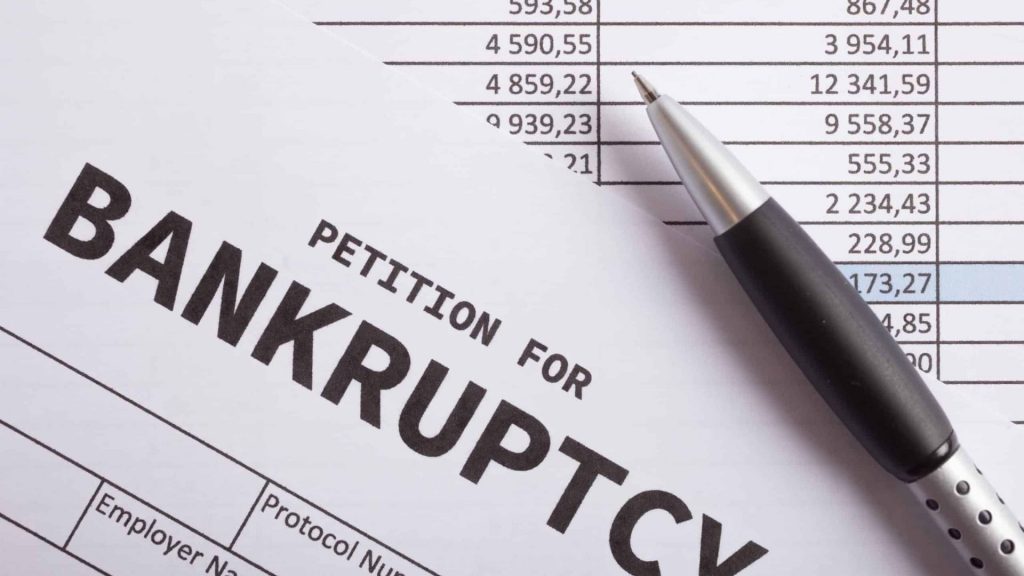Bankruptcy insolvency and reorganization. A bankruptcy court’s function is to allow an insolvent company to submit a reorganization plan. If approved, the company can continue to operate while deferring payment on its most pressing debts until later.
Bankruptcy Insolvency And Reorganization
The reorganization plan must include drastic steps to reduce costs and increase revenue in order to be approved by a bankruptcy judge. If the plan is rejected or approved but fails, the company is forced to liquidate. Its assets will be liquidated and distributed to creditors. A reorganization necessitates the restatement of the company’s assets and liabilities, as well as negotiations with major creditors to establish repayment schedules.
Bankruptcy
Bankruptcy is a proceeding in court and includes a judge assessing the assets and liabilities of individuals, partnerships, and businesses who believe that they can’t pay their debts.
In this proceeding, the court decides whether the debts should be discharged, or whether they are no longer legally required to be repaid. Where the court believes the person or business has enough assets to pay their bills a bankruptcy proceeding can be dismissed.
Who Declares Bankruptcy?
Those who file for bankruptcy have far more debts than money to pay them and don’t see that changing anytime soon. Bankruptcy is also often used as a financial planning tool when there is a need to restructure the terms despite having money to repay the debts.
Filing for bankruptcy is more common among individuals who have to pay back money for a mortgage, credit card debt, auto loan, or student loan while not having the income to pay for it. Although bankruptcy is a chance to restart, it affects the future ability to use money. While in the short term, it may lead to prevention or delay foreclosure on a home and repossession of a car, however, in the end, there is a price to pay for 7-10 years.
When Should Bankruptcy Be Declared?
Where the repayment of all of the debts in five years becomes impossible, it might be the time to file for bankruptcy. If some combination of bad luck and bad choices befall someone and that does not change in five years, bankruptcy is the way out. Where one does not qualify for it, debt relief is another option. However, it typically requires 3-5 years to resolve and doesn’t guarantee that all debt will be settled when it finishes.
The time required for bankruptcy is usually not a problem. But the matter of concern is that bankruptcy carries significant long-term penalties. Bankruptcy stays on the credit report for 7 to 10 years and thus makes getting loans in the future very difficult.
There are several types of bankruptcy that can be filed. The most common forms are discussed below.
Full Exemption
It is the most popular form of bankruptcy and is usually best for those with a low income and few assets. Under the full exemption, a court judgment exempts the borrower from all responsibility for repaying unsecured debts. It could also permit to keep key assets without repaying the debt. At the end of a successful bankruptcy filing, most debts are discharged. Debts that won’t be discharged comprise alimony, child support, some types of unpaid taxes, and student loans.
The bankruptcy usually remains on the credit report for 10 years. Despite its impact on credit score, the score could improve over time as finances are rebuilt. If a person has enough money coming in to pay down the debts gradually, the bankruptcy judge may not allow this type of bankruptcy.
Wage-Earners Plan
This comprises 36% of non-business bankruptcy filings. A part-payment bankruptcy requires repaying some of the debts to have the rest forgiven. This is for those who do not want to let go of their property or do not qualify for full exemption from the responsibility of payment.
This bankruptcy can only be filed if the debts do not exceed a certain amount. Usually, a 3-to-5 years repayment plan is agreed upon with lenders after which the remaining debts are removed.
Reorganization Bankruptcy
This type of bankruptcy is filed by businesses where businesses want to stay open while they restructure their debts to pay back creditors. Any size business, partnerships, and individuals can use this type of bankruptcy in some rare cases. Most of the decisions are made with permission from the courts, and the business may continue according to that.
Consequences Of Bankruptcy
The basic purpose of bankruptcy is to give another chance with finances. Full exemption bankruptcy pays off debts by selling non-exempt possessions having some value. The wage earners plan provides the opportunity to develop a 3-to-5 years plan to repay all debt and keep the personal property.
Filing for bankruptcy affects the credit score. Bankruptcy remains on the credit report for many years, depending upon which type of bankruptcy is filed. The credit report may get better if, after declaring bankruptcy, bills payments are made continuously on time.
During this time, a bankruptcy discharge could prevent from getting new credits and may even cause problems when applying for jobs. If some of the debt involves loans that were co-signed by family or friends, they could be made responsible for repaying some of it.
Insolvency
One can be insolvent without being bankrupt, but one can’t be bankrupt without being insolvent. Most of the time, both are confused as being the same thing, but they are quite different. Insolvency is a problem that bankruptcy is designed to solve. Insolvency is being unable to repay debts in due time. There are solutions for resolving insolvency, like borrowing money, increasing income, or negotiating a debt payment plan with creditors.
Bankruptcy comes when other methods to clear debt fail. Insolvency comes in two flavors. The first, called cash-flow insolvency, occurs when an insolvent doesn’t have the money to repay the debt when it’s due. The second, called balance-sheet insolvency, occurs when debts exceed assets. It is possible to pay with cash available, but financial collapse might not be far off. Paying debts will deplete cash and lead to cash-flow insolvency.
Insolvency only becomes an issue when the creditor wishes to collect, and the debtor can’t pay his dues. Failing to pay debts leads to debt collection efforts that force some kind of action. It is a trigger for financial hardship. When unable to pay rent or electric bills, one could ask for a loan. If they get one, the insolvency finishes unless they can’t balance income with expenses. The longer one is insolvent, the more difficult it will be.
If one can’t get away from insolvency, bankruptcy may be the sole way to prevent financial hemorrhaging. Showing that one is insolvent is essential in establishing a bankruptcy claim.
Cash Flow Insolvency
Inability to pay debts results in cash-flow insolvency. Cash flow, or equitable, insolvency impacts both businesses and individuals. It occurs when there are no ways left of resolving debt. One way to avoid such insolvency is to liquidate an asset to pay the debt. When there are no assets left to sell and places to borrow money from, and income isn’t sufficient to cover debts, it probably will result in the negotiation of a payment agreement with creditors.
This insolvency needs a cash-flow test. The debtor requires to analyze the current and future cash flows to determine whether income can cover debt payments.
Balance Sheet Insolvency
A balance sheet insolvency test is often taken to decide whether to file for bankruptcy or not. To decide, inflows, outflows, and assets of a business must be evaluated. If inflows are less than outflows and the value of the business’ assets is worth less than what is owed – a condition called negative net assets — then restructuring without the help of a bankruptcy filing might be pointless.
Financial advisors will review business operations and suggest a course of action. Staying in business requires that the company assures its creditors that correct assumptions are made about future cash flows.
A business may be cash-flow insolvent but balance sheet solvent if its non-liquid assets are more than its liabilities. Also, a business can be a balance sheet insolvent but cash flow solvent if its revenues allow it to meet its immediate financial obligations. Many companies that hold long-term debt operate in this stat.
Reorganization
Reorganization is a significant and disruptive overhaul of a troubled business that intends to restore itself to profitability. It includes closing or selling divisions, replacing management, cutting off budgets, and laying off workers.
Reorganization bankruptcy focuses on a reorganization, during which a company needs to submit a plan for how it hopes to recover and repay some of its obligations.
Understanding Reorganization
A bankruptcy court gives an insolvent company a chance to submit a reorganization plan. If approved, the company can continue to operate and postpone paying its debts until another date. For a bankruptcy judge to approve, the reorganization plan must include significant steps to reduce costs and increase revenue. If the plan is rejected or fails, the company is forced into liquidation. Its assets will be sold and distributed to its creditors.
A reorganization calls for a restatement of the company’s assets and liabilities as well as negotiations with basic creditors to set repayment schedules.
Drastic Changes
Reorganization may comprise of a change in the arrangement or ownership of a company by a merger or consolidation, spinoff acquisition, transfer, recapitalization, a change in name, or management. This part of reorganization is known as restructuring. Reorganization to wave off bankruptcy may have a favorable result for shareholders. Reorganization in bankruptcy is mostly bad news for shareholders.
Not all reorganizations are looked upon by a bankruptcy court. The management of an unprofitable company may impose a series of budget cuts, staff layoffs, management ousters, and product line revisions to restore the company’s health. In such cases, the company is not in bankruptcy yet. This is called a structural reorganization.
Supervised Reorganization
When the court supervises bankruptcy proceedings, reorganization focuses on restructuring a company’s finances. The company is temporarily protected from claims by creditors for full repayment of outstanding debts.
Once the bankruptcy court approves the reorganization plan, the company will redraw its finances, operations, management, and whatever is needed to revive it. It will start to pay its creditors according to a revised schedule too.
Who Loses During Reorganization?
A court-supervised reorganization is not good for shareholders and creditors, who may lose their investments. Even if the company comes out successfully from the reorganization, it may issue new shares, which will dilute the value of previous shareholders.
If the reorganization fails, the company will liquidate and sell off any remaining assets. Shareholders are last to receive any proceeds and get nothing unless money is left over after repaying creditors, senior lenders, bondholders, and preferred stock shareholders in full.
Structural Reorganization
Reorganization by a company that is in trouble but not yet in bankruptcy is good news for shareholders. Its focus is to better the company’s performance. It often follows a new CEO. Sometimes, the second type of reorganization is a precursor to the first. If the company’s attempt at reorganizing through something like a merger fails, it might try to reorganize through reorganization bankruptcy.
Final Thoughts
A change in the structure or ownership of a company can be accomplished through a merger or consolidation, spinoff acquisition, transfer, recapitalization, a name change, or a change in management. This stage of a reorganization is referred to as restructuring. A bankruptcy court does not oversee all reorganizations. An unprofitable company’s management may impose a drastic series of budget cuts, layoffs, management ousters, and product line revisions in order to restore the company’s health. In such cases, the company has not yet declared bankruptcy and is hoping to avoid it. This is known as structural reorganization.





